Learn the rules, to one day rip them up.
How i won the first and only Pioneer of the Year award at Farrow & Ball // even though I ate peas wrong // rules are meant to be broken, but not right away
This is my lesson to my younger self. Personally, professionally, and for brands - in order to truly win, you must first fully understand the game you are playing in order to shake things up. And then you can tear up the rule book.
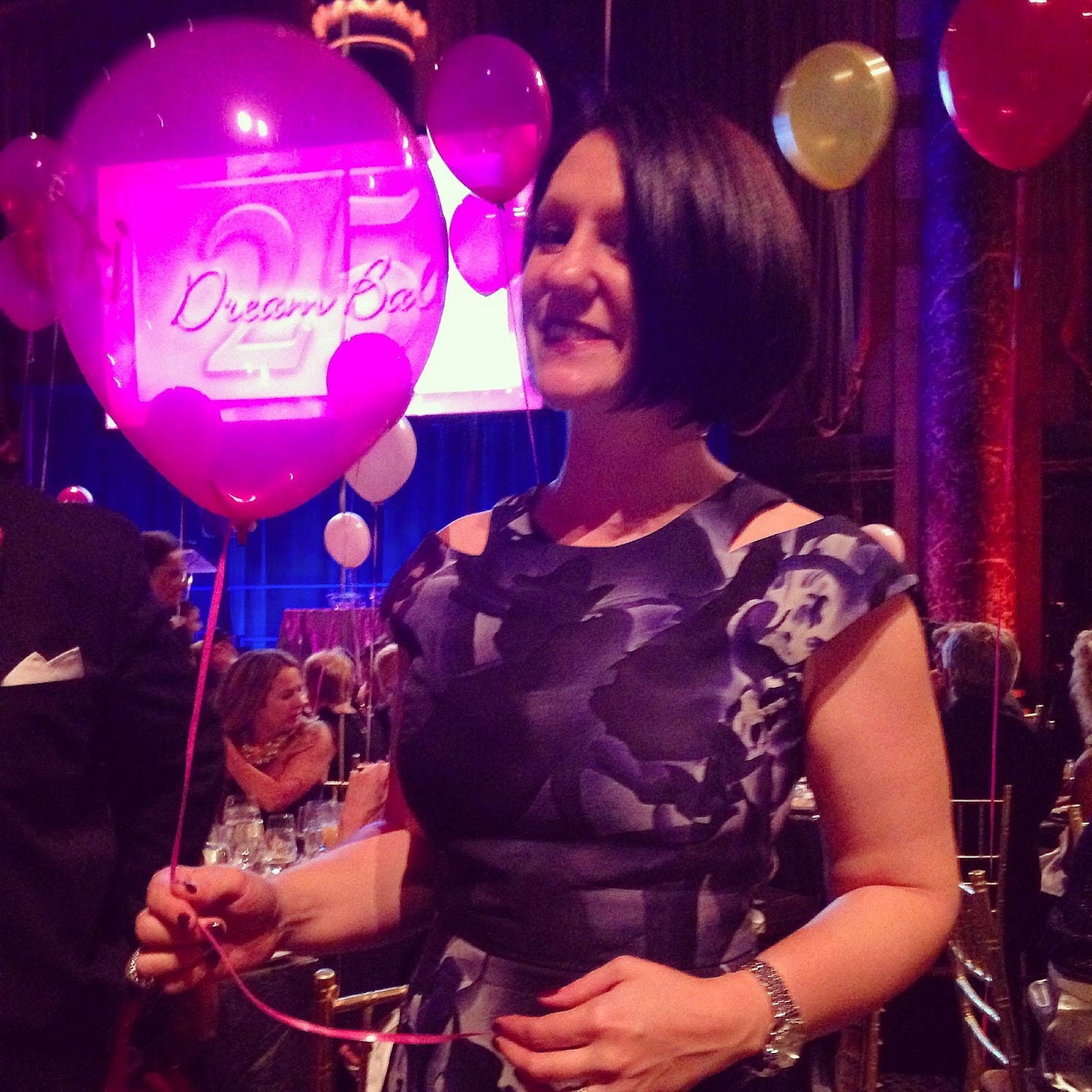
Until then, though, you’ve got to play the game as is.
So when does the change come?
Slowly, and in time.
Years ago, I was hired to help Farrow & Ball grow in North America. Me, a youngish, 2nd generation Irish American woman, tasked with gently and yet firmly helping a heritage British brand modernize, just enough to broaden loyalty without ruining it. No easy feat, at all. It was because of my past experience at top luxury & design brands such as Zenith Swiss Watch / LVMH and PANTONE that I was there - and yes, I had to trot out my resume often and defensively when asked “but how do we know this will work?”
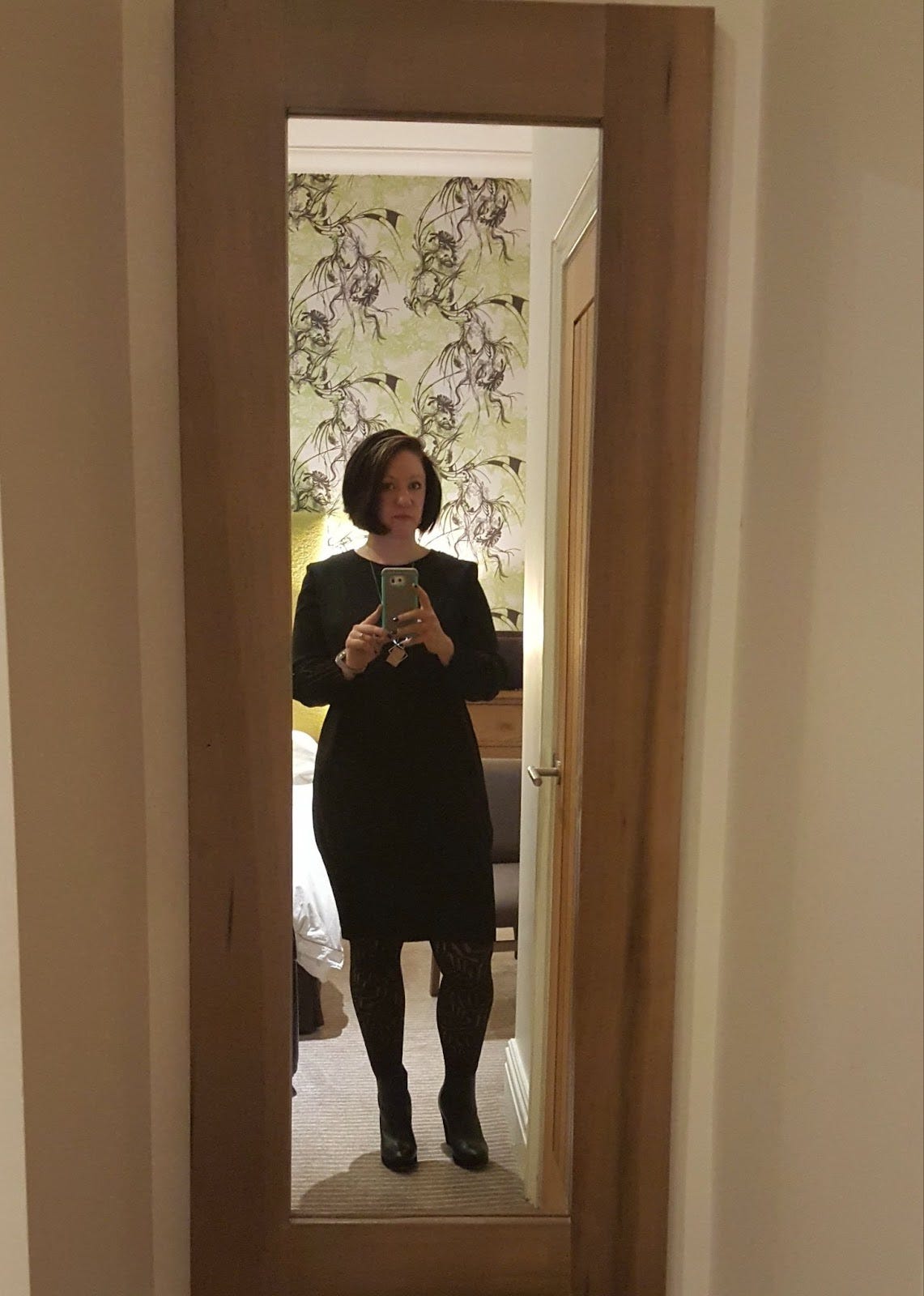
So when I first joined, I had the common, tense experience of not knowing where to start - because so much needed to be fixed. And I knew I couldn’t be a bull in a China shop, smashing everything up, if I really wanted to get buy-in and collaboration for broader, more impactful change.
Seeing my struggle, one of my mentors gifted me the book, Watching the English: The Hidden Rules of English Behaviour. As an American living in England, she saw firsthand that no, in fact, we did not speak the same language or have the same code of conduct and she wanted me to succeed. So over a posh breakfast at a Kit Kemp designed hotel, she said “in order to get them to not just hear you, but really listen to you - you first must learn their language.”
In reading the book, I was instantly horrified. I ate peas wrong.
First, I sat in a pub waiting for a server to come take my order (wrong). And after 20 minutes of pretending I meant to just sit there like an idiot, I went up and ordered my fish & chips. And then, horror of horrors, I scooped up peas using my fork, like a spoon. I did NOT turn my fork over and lightly smash them down with my knife, as is actually the rule of law of England.
After I recovered from that embarrassment, I read the book and thought about all the times in my career that I tried to rip up the rule book, too soon. And the ensuing failures or unnecessary conflicts. And so, to not repeat my own stubborn mistakes, I sat back, listened and learned.
So when I was presented with the opportunity to truly shake up the brand by reconceptualizing its showroom strategy, I did so with the rule book in my back pocket and the support to test some of their own rules guiding me forward. Here’s a look back at some of my wins and the times I chose not to follow the common brand and business rules.
“Brands must look consistent, everywhere all the time.”
Yes, until they shouldn’t.
This is the stress of a heritage brand, especially one known round the world. Consistency is what helps design aficionados around the world know that logo on that paint tin and be confident in the quality of what’s inside. But in order to be a truly global brand, it must also be confident in itself, knowing that stretching and modernizing can help ensure it is around another 75 years.
When I first joined Farrow & Ball, I met with a well-known publicist who grew up in England but had been in NYC for decades. She said she didn’t feel posh enough to go into a Farrow & Ball showroom - which was all the proof I needed that we needed to freshen things up. When it was time to move the LA showroom, my CMO and I jumped at the opportunity to prove we could expand and not break.
The brief to the design team of Project Room was simple : help us make a 75 year old British brand relevant again, and gain credibility in the design community in LA. Think about creating a space that homeowners feel comfortable exploring in, that designers want to take their clients to, and that painters don’t mind picking up several gallons at a time.
When the beautiful geniuses at Project Room showed us their first design concept, I remember getting emotional. And a bit scared. Because it was VERY different than anything else the brand had ever done - and that was exactly the point. (I forever adore you, Isaac and Sandy)
Custom signage for the LA Showroom - artwork by LA artist Michael Dopp, screen printed with Farrow & Ball paint
Inspired by the sunny aesthetic of California and the unique LA design scene, we went with a flexible space complete with a grid system of work tables on casters. Knowing that the depth of our color needed to be experienced in person, and that the names of our colors was often what got people through the door, Project Room designed totem poles representing each unique Farrow & Ball color, crafted by hand right there in LA. And then the exterior - painted in stripes of all 132 active colo(u)rs, we created the most instagrammable moment any paint store had ever seen.
If we had kept up with tradition and opened a new space, much like all the others, we still would have gotten some love and attention. But with the creation of this truly unique, LA specific space, Farrow & Ball activated the LA design community in a way that larger, more corporate brands could never dream of. I can’t see Behr paint clearing their showroom to let artist Peter Shire rebuild his workshop there for the week.
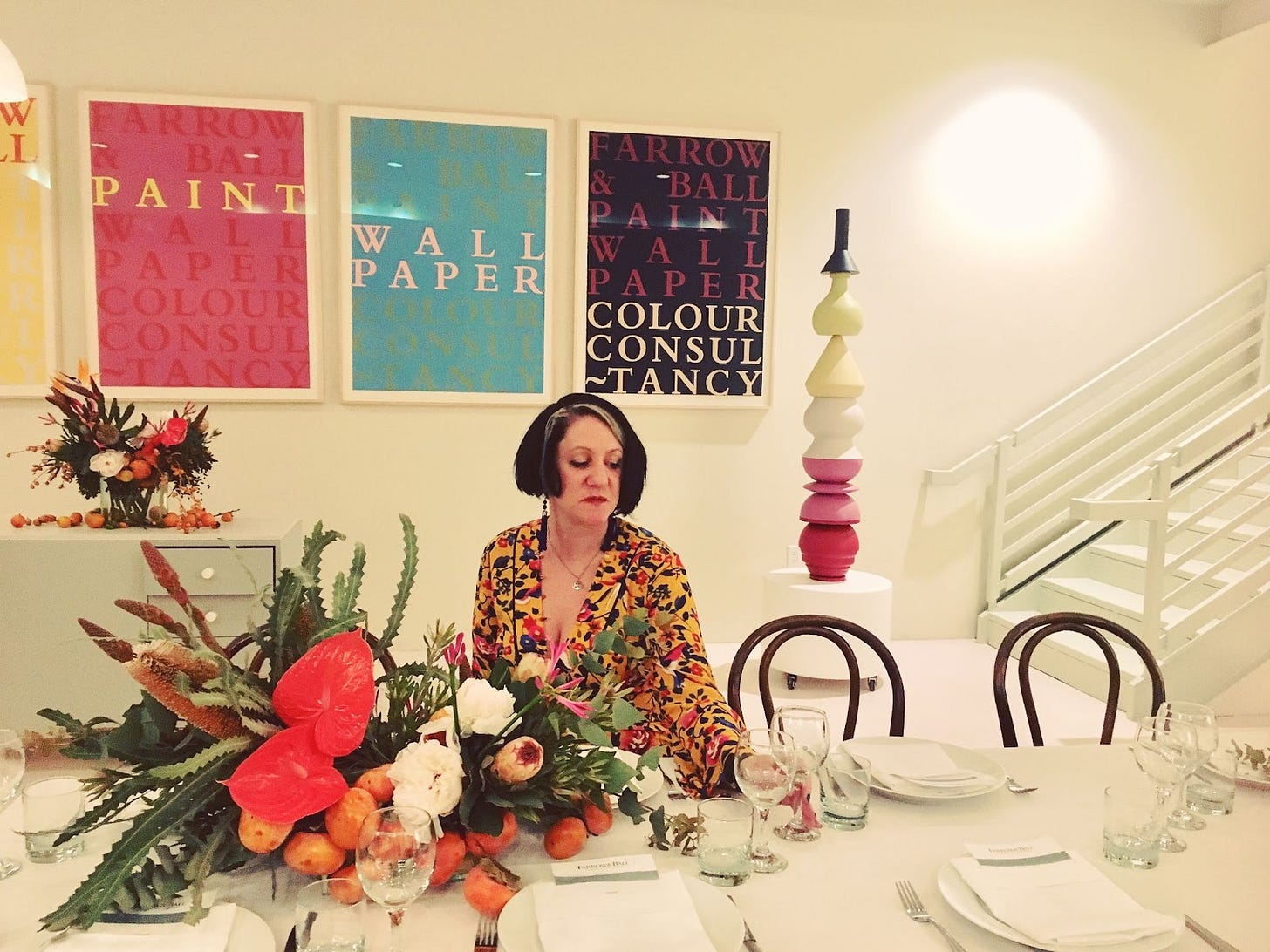
“Kill or be killed.”
I started my career in luxury in the mid 2002s and on the fringe of fashion. So this truly was a rule, but one that never sat well with me.
In my first job, one woman bullied others (myself included) because she was bored and frustrated in her role. You could see this, when you weren’t the target, but when you were in her sights - it was brutal. And I quickly realized she was also just parroting her mentor’s behaviors. If something was wrong, send the nastiest email with everyone copied. Leave people out of meetings, and worse, “forget” to invite people to drinks after work. This was one of the reasons I left that company - and see last post about owner who threw things.
But then I encountered it again at the next place, and it was even worse. My boss at the time would belittle me in front of her peers at industry events. I would be so shocked at what was happening, so I would just stand there and take it. Or, I didn’t trust myself to say anything to defend myself without a torrent of curses, and like the truly nasty curses, coming out. I went on to develop a bald spot the size of a silver dollar while working for her.
So as I moved up in my career and started managing more and more people, I had a hard time - at first - figuring out how to make shit happen while leading a group of individuals. I realized that while being mean and manipulative had been the standard for other people- I just couldn’t do it. I don’t think any past colleagues or teammates would then say I was particularly soft or easy to work with (a publishing friend once told me I was known for being “tough but fair”). But I was not about to expend energy creating miscommunications and shenanigans to keep a team divided. And I was going to do my best to sense emotions around a group project, like a global viral phenomenon scheduled down to the minute, and mitigate any issues before the group fell apart.
Basically, this scene in PCU shaped my approach to leadership.
And it worked. To this day, even as a consultant, I lead with radical transparency, humility, and grace. Because I felt firsthand how awful and stupid it was the other ways. And when I look back at what I was able to achieve when I empowered those I managed, particularly when I was empowered to write my own rules of leadership (thanks Jo!), I’m the most proud.
And when I look back at the Kill or Be Killed days, I just see wasted moments, lost opportunities and failure.
“Offer the lowest possible rate.”
The first time I went to hire someone, I was so nervous. I wanted it to be perfect, and to prove my worth as a manager by being someone who found the right person to do the right job in the right way. I was saddened when I was told the salary range, and when we identified a female candidate, the HR manager told me to go in at the lowest - because women don’t negotiate and we could then report that reduction in salary as a savings.
I hated how that felt and tried to push back a little bit - but was not in a position to make any changes.
Thankfully in my next role, though, I took this lesson with me and pushed back on HR when they said the exact same thing. I explained - to the female HR manager - that if we know women don’t always negotiate but that we want great talent to join and do great work, then we must do things differently and help by offering towards the higher side of the salary range, and then coaching them when they accept.
And so that’s what I did. I found the perfect candidate. I offered her the salary at the top of the range. She accepted. So our first official conversation when she started was about the importance of negotiating and what to do next time. (For anyone wanting help with this - read Alexandra Carter’s book - Ask for More).
“Companies shouldn’t comment on politics or social issues”
The biggest deception of capitalism.
Of course you should want to know the value system of the company (and executives) you are giving your hard-earned money to. Especially for women, who make 70-80% of all household purchasing decisions, they want to know where their dollars are going.
Like biological magnification. If a small fish eats poison and a bigger fish eats a bunch of those smaller, lightly poisoned fish, the medium sized fish has more poison. And then when we eat the even bigger fish who ate a few medium sized fish, we’re getting a belly full of poison. Similarly - when we spend one dollar with a company, the company responds by keeping operations going and paying its staff, executives and shareholders, who donate to PACs that lobby for laws to keep them dumping poison into our environment, particularly lower income communities. (Quite a jump, I know - or was it?!)
Take the StickerMule CEO letter. You can believe whatever you’d like, of course. And I can make sure that my dollars are going towards executives, like the guys at Dr Bonners!, whose values are more consistent with mine and are actively trying to improve the world live in, for ALL.
“Success starts with a capital C” - as in C-Suite
This is the part of “tearing up the rule book” that I’ve been the most surprised by, but also the happiest. I used to think that the only definition of success was rising through the ranks of a well-known brand with that big, capital C before my title. And technically, I did get there, and continue to play in this world as a fractional. But I’m doing so with more balance these days, spending Fridays off with my daughter. And as my work evolves, I’m looking to build this balance for more people like myself - who have great ideas, strategic minds, and just can’t do the traditional 9-5 with a 2+ hour commute anymore. More to come.
Last week, we went to the Fairy Trail in the South Mountain Reservation.
Our Friday adventures are even better when Augustus can join, and they can take turns walking each other.
And now, two decades later, I’m excited to not only rip up the past rule book, but start to create a new set for myself and those around me.


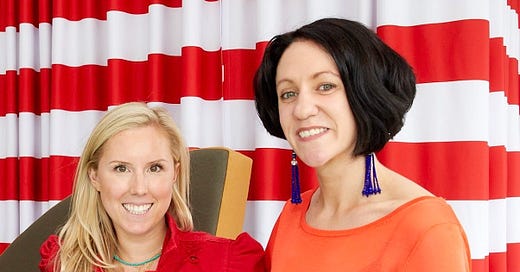




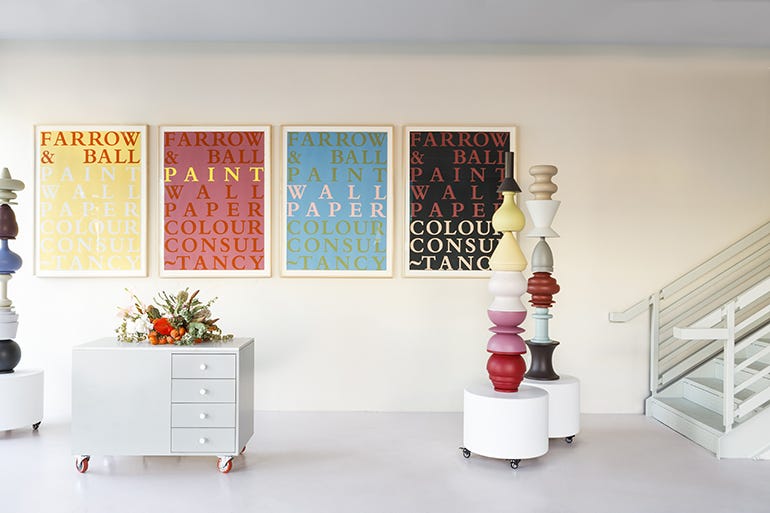

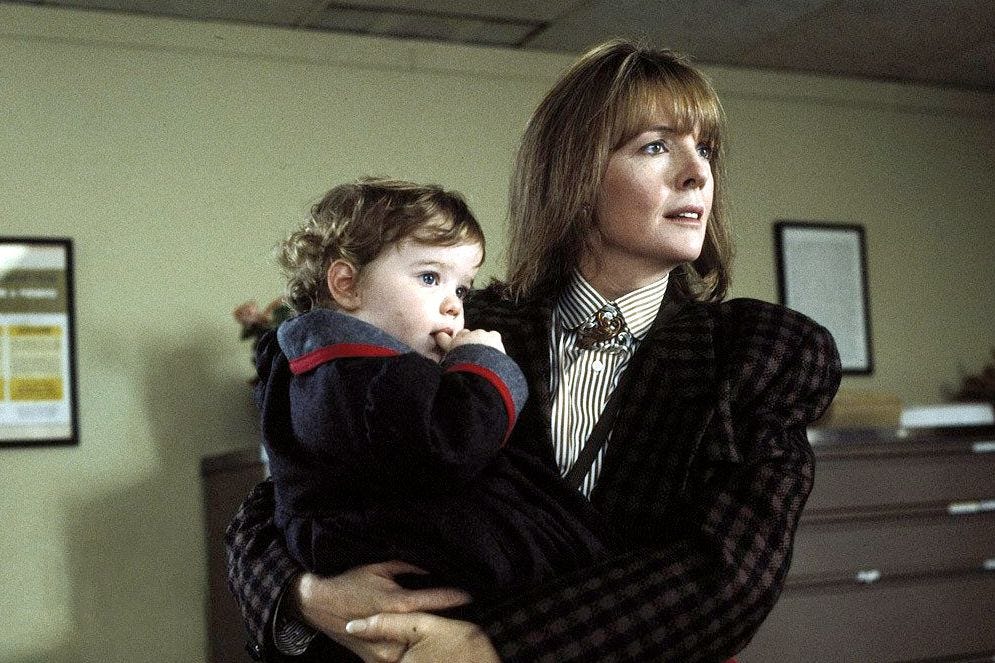


So fresh, needed, helpful, and hopeful. Thank you for writing and sharing!
I love your writing, Molly! Keep the wisdom and fire coming.